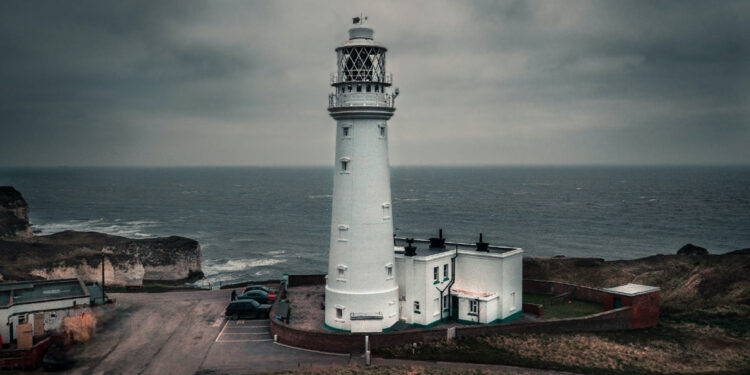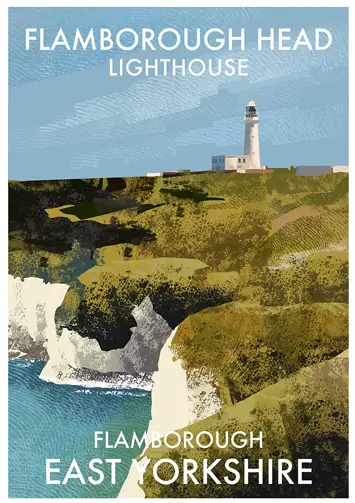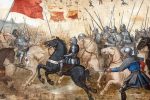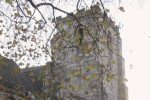A History of Flamborough Head Lighthouse

By Roger O’Reilly
Sometime between 1669 and 1674, the earlier of the two lighthouses that stand guard on the chalk cliffs of Flamborough Head was first erected. This elderly sentinel is the earliest known lighthouse still in existence in the UK.
Built by order of Sir John Clayton, on a commission from Charles II, it was to be the first of three lighthouses the entrepreneur intended to build and by which he would accrue a fortune by charging shipping for lighting this hazardous coastline. Like many an aspiring mogul before and since, he overestimated the market and his ability to provide for it and within a short time he was bankrupt and the other two towers remained unbuild. Current evidence suggests that even the one tower he managed to build was never lit.
The current lighthouse at Flamborough- the name was initially presumed to originate as “the place of the flame”, but now thought to come from the Saxon “Flaen” meaning dart, which the shape of the headland resembles – was designed in 1806 by Trinity House architect, Samuel Wyatt. The brick tower, 25.5 metres tall with lantern and gallery was by John Matson of Bridlington at a cost of £8,000 without the use of scaffolding and completed in nine months.
This new Flamborough Head Lighthouse was intended to guide deep sea vessels and coastal traffic and mark the headland for vessels heading for Scarborough and Bridlington.
“White flashes every 15 seconds”
The original lighting apparatus was designed by optics specialist George Robinson. It consisted of a rotating vertical shaft with a three sided frame onto which were fixed 21 parabolic reflectors, seven on each of the three sides. Red glass covered reflectors on each side giving a distinctive light characteristic of two white flashes followed by a red flash, an innovation quickly adopted elsewhere. ‘Two whites to one red / Indicates Flambro’ Head’ meant it was easy for instance on rough seas and in the dead of night to distinguish the light from that of Cromer, a crucial distinction for a captain perhaps blown off course and unfamiliar with the coast.
In 1872 a new paraffin lamp was installed, the first lighthouse to use the fuel. Paraffin was still a fairly new illuminant having been discovered as a by product of the coal industry by the Scot, James Young over two decades prior but only mass produced in the previous five years. After Flamborough, Trinity House upgraded all their lighthouses to paraffin.
A fog signal station was added to Flamborough in 1859. At first an 18 pounder was used, sounding once every 15 minutes. In 1878 explosive rockets replaced the cannon. These were fired every 10 minutes reaching 180 metres into the fog shrouded sky. Later in 1908, a fog siren was installed sounding one long and one short blast every 90 seconds. This was duly replaced by a pair of diaphones in 1924 and finally an electric fog signal was initiated in 1975.
In 1925 the lantern was extended to house a new 4.5 metre lens. The First Order revolving catadioptric optic displays four white flashes every 15 seconds. In 1940 the lighthouse was electrified and then automated in early 1996, with the keepers leaving on 8 May. The lighthouse is now monitored and controlled from Trinity House’s Planning Centre in Harwich, Essex.
Artist and author Roger O’Reilly has spent the last five years illustrating the 350 lighthouses of Britain and Ireland. They are available as prints from lighthouseeditions.com. A book will be out in early 2024.










